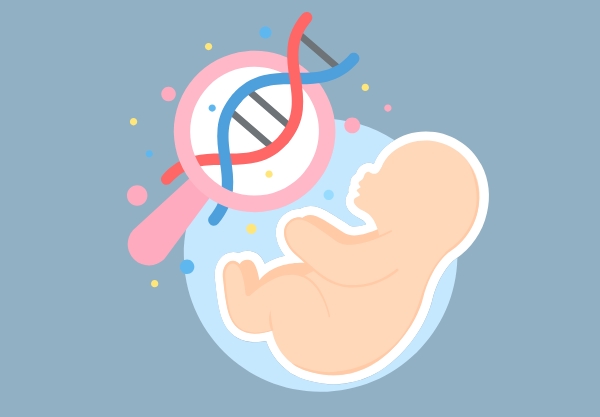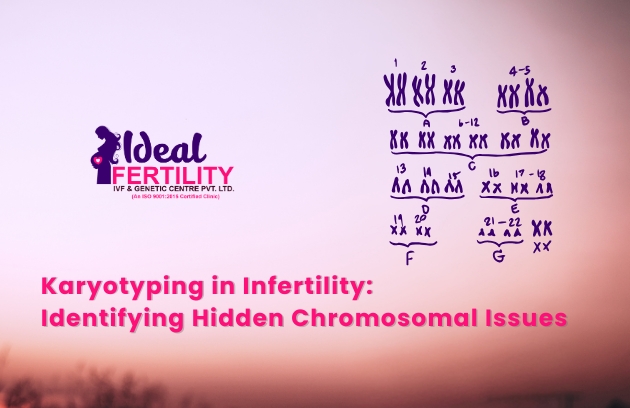Table of Contents
Infertility affects millions of couples worldwide, often bringing emotional and physical challenges. While many causes of infertility are related to hormonal imbalances or physical abnormalities, some cases are linked to underlying genetic issues. Karyotyping, a form of chromosome analysis, plays a crucial role in identifying hidden chromosomal abnormalities that may impact fertility. By uncovering these genetic issues, couples can gain clarity on their fertility challenges and explore appropriate treatment options.
This article explores the role of karyotyping in infertility, its significance in detecting chromosomal abnormalities, the process involved, and how it can guide fertility treatments.
What is Karyotyping?
Karyotyping is a laboratory technique that examines an individual’s chromosomes to detect abnormalities in their number or structure. Chromosomes are thread-like structures within cells that carry genetic information essential for growth, development, and reproduction.
In humans, there are 46 chromosomes arranged in 23 pairs. Any deviation from this normal pattern, such as missing or extra chromosomes, can result in fertility issues.
Why is Karyotyping Important in Infertility?
- Identifying Chromosomal Abnormalities
Chromosomal abnormalities are a significant cause of recurrent miscarriages and failed pregnancy attempts. Karyotyping helps detect issues such as:- Aneuploidy (abnormal chromosome number, e.g., Down syndrome with an extra chromosome 21).
- Translocations (rearrangement of parts between chromosomes).
- Inversions (flipping of chromosome segments).
- Unexplained Infertility
Couples with unexplained infertility often benefit from chromosome analysis, as it uncovers hidden genetic issues that standard tests may not detect.
- Recurrent Pregnancy Loss
Karyotyping can determine whether recurrent miscarriages are due to genetic issues in either partner. - Guiding Assisted Reproductive Technologies (ART)
Understanding chromosomal abnormalities helps fertility specialists tailor treatments like IVF or preimplantation genetic testing (PGT) to improve success rates.
The Role of Karyotyping in Male and Female Infertility
Male Infertility
- Klinefelter Syndrome (XXY): A common chromosomal abnormality in men causing low testosterone and azoospermia (absence of sperm).
- Y-Chromosome Microdeletions: Small deletions in the Y chromosome can affect sperm production.
- Karyotyping helps identify these conditions, aiding in diagnosis and treatment planning.
Female Infertility
- Turner Syndrome (Monosomy X): Women with only one X chromosome may experience ovarian failure and infertility.
- Balanced Translocations: These can cause implantation failures or miscarriages.
Karyotyping provides critical insights into these genetic factors in women facing fertility challenges.
How is Karyotyping Performed?
The karyotyping process involves several steps:
- Sample Collection
- A blood sample is most commonly used for karyotyping. Other sources include amniotic fluid, bone marrow, or placental tissue.
- Chromosome Preparation
- The sample is cultured in a lab to stimulate cell division.
- Cells are arrested in the metaphase stage, where chromosomes are most visible.
- Staining and Imaging
- Chromosomes are stained and viewed under a microscope to produce a karyogram, a visual representation of an individual’s chromosomes.
- Analysis
- A trained cytogeneticist examines the karyogram to identify abnormalities in chromosome number, size, shape, or structure.
Benefits of Karyotyping in Infertility Treatment

- Accurate Diagnosis
- Karyotyping provides definitive information about chromosomal abnormalities, guiding couples toward the right treatment path.
- Customized Fertility Treatments
- Couples can pursue tailored options like IVF with PGT or sperm/egg donation based on their genetic findings.
- Risk Assessment
- It helps evaluate the likelihood of passing genetic issues to offspring, aiding in family planning decisions.
- Peace of Mind
- Understanding the root cause of infertility offers emotional relief and a clear direction for next steps.
Limitations of Karyotyping
While karyotyping is a powerful tool, it has its limitations:
- Resolution: It may not detect smaller genetic mutations or deletions.
- Cost and Time: Karyotyping can be expensive and time-consuming compared to other tests.
- Need for Complementary Tests: Advanced techniques like FISH (Fluorescence In Situ Hybridization) or microarray analysis may be required for detailed genetic information.
Who Should Consider Karyotyping?
- Couples with Recurrent Pregnancy Loss
- Those who have experienced two or more miscarriages.
- Unexplained Infertility
- Couples who have not identified a cause despite undergoing standard fertility tests.
- Failed IVF Cycles
- Repeated implantation failures may point to genetic issues.
- Known Family History of Genetic Disorders
- Those with a history of chromosomal abnormalities in the family.
How Karyotyping Guides Assisted Reproductive Technology (ART)
Karyotyping is an essential tool in ART, particularly in:
- Preimplantation Genetic Testing (PGT)
- Before transferring embryos during IVF, PGT ensures only chromosomally normal embryos are selected, improving pregnancy outcomes.
- Egg or Sperm Donation
- For individuals with significant genetic abnormalities, using donor eggs or sperm can increase the chances of a healthy pregnancy.
- Surrogacy
- For couples unable to carry a pregnancy due to chromosomal issues, surrogacy becomes a viable option.
Recent Advances in Chromosome Analysis
- Next-Generation Sequencing (NGS):
- Offers high-resolution analysis of genetic material, surpassing traditional karyotyping.
- Microarray Comparative Genomic Hybridization (CGH):
- Detects submicroscopic chromosomal changes for more precise diagnosis.
- Fluorescence In Situ Hybridization (FISH):
- Used to identify specific chromosomal abnormalities with fluorescent probes.
These advancements complement traditional karyotyping, ensuring comprehensive genetic evaluation.
Conclusion
Karyotyping is an indispensable tool in infertility diagnosis and treatment, offering a deeper understanding of the genetic factors that influence fertility. By identifying hidden chromosomal issues, it empowers couples and fertility specialists to make informed decisions and pursue personalized treatment options.
As advancements in chromosome analysis and genetic testing continue, karyotyping will remain a cornerstone in unraveling the complexities of infertility, helping more couples achieve their dream of parenthood.
FAQs About Chromosome Analysis
Q1: What is the primary purpose of karyotyping in infertility?
Karyotyping identifies chromosomal abnormalities that may cause infertility, recurrent miscarriages, or failed ART attempts.
Q2: Is karyotyping painful?
No, it’s a simple and minimally invasive procedure, typically requiring only a blood sample.
Q3: Can karyotyping detect all genetic issues?
Karyotyping identifies chromosomal abnormalities but cannot detect single-gene mutations or smaller genetic changes. Advanced tests like NGS may be needed for detailed analysis.
Q4: What is the cost of karyotyping?
The cost varies depending on the location and laboratory but is generally affordable compared to more advanced genetic tests.
Q5: Can karyotyping improve IVF success rates?
Yes, by identifying chromosomal issues, karyotyping helps specialists tailor treatments like IVF with PGT, increasing the chances of success.
Q6: Are both partners required to undergo karyotyping?
In cases of infertility or recurrent miscarriages, both partners may need karyotyping to identify potential genetic contributions.
Q7: Is karyotyping necessary for all infertility cases?
Not all couples require karyotyping. It is typically recommended for recurrent pregnancy loss, unexplained infertility, or when genetic abnormalities are suspected.


